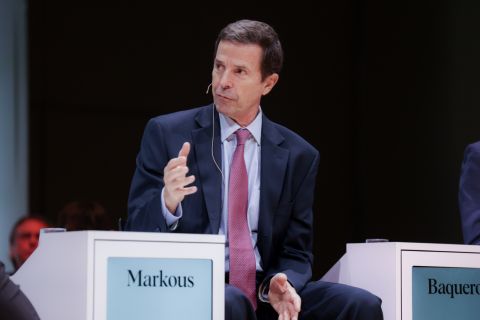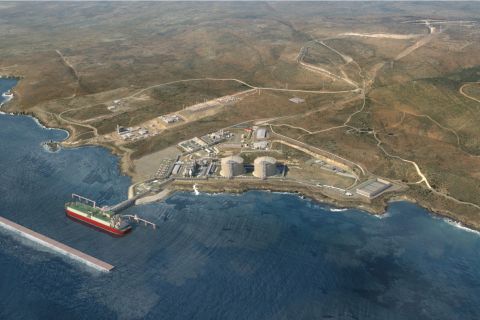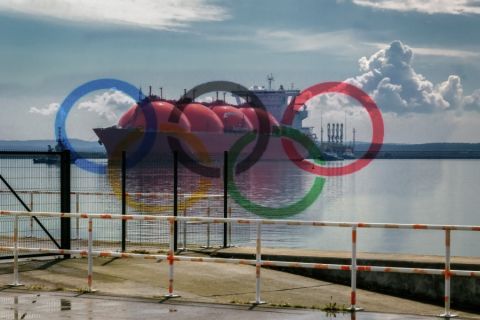
Equinor will pay a cash consideration of $500 million to EQT to balance the overall transaction. (Source: Shutterstock)
Equinor ASA’s recent swap of U.S. onshore assets with EQT Corp. is an example of the Norwegian company “high-grading” its international E&P portfolio, the company’s CFO Torgrim Reitan said during a quarterly webcast.
The swap allows Equinor to build “size and scale in certain areas where we do operate and where we can take advantage of that,” Reitan said during Equinor’s first-quarter 2024 financial webcast on April 25.
“On [the] production side, it typically will add around 15,000 bbl/d in increased production, and … lower breakeven [costs], lower emissions and [generate] better returns,” Reitan said, responding to questions from analysts.
“This was sort of the last piece of operated activities within U.S. onshore activity. And it was a small operation where we lacked scale and we have come to the conclusion that we don't see ourselves as a future operator within U.S. onshore activities. And we instead want to prioritize working with the best operators,” Reitan said.
On April 15, Equinor entered into a swap deal with EQT subsidiary EQT ARO LLC. The deal will see Equinor divest its 100% interest in the Marcellus and Utica shales in the Appalachian Basin in southeastern Ohio, and transfer the operatorship to EQT. In exchange, Equinor will acquire 40% of EQT’s non-operated working interest in the Northern Marcellus Shale in Pennsylvania, the Norwegian company said in its quarterly financial statements.
Equinor will pay a cash consideration of $500 million to EQT to balance the overall transaction.
RELATED
EQT, Equinor Agree to Massive Appalachia Acreage Swap
Following the transaction, Equinor will boost its average working interest to 25.7% from 15.7% in certain Chesapeake Energy-operated Northern Marcellus gas units, Reitan said. Closing is expected in the second quarter, subject to approval by relevant authorities.
De-risking Empire Wind 1
Equinor continues to move forward with its Empire Wind projects, located 15 miles to 30 miles southeast of Long Island and spanning 80,000 acres, with water depths of between approximately 75 ft to 135 ft.
“2024 is the year of de-risking for [the] Empire Wind 1 project in New York,” Reitan said.
“Next, we aim to take an investment decision and secure project financing later this year. And with a new contract and project financing, we expect a nominal equity return between 12% and 16% for our U.S. East Coast offshore wind portfolio. From there, we also aim to farm down and bring in a new partner, which will significantly reduce our capex,” Reitan said.
The lease was acquired in 2017. The project’s two phases, Empire Wind 1 (810 megawatts (MW)) and 2 (1,260 MW), have a potential capacity of more than 2 gigawatts (GW) — enough to power over 1 million New York homes, according to Equinor. Empire Wind 1 will have up to 57 wind turbines. Empire Wind 2 will consist of up to 90 wind turbines.
Equinor said in February 2024 that Empire Wind 1 could deliver initial power to New Yorkers by 2026. The project is on track to start construction offshore Long Island later this year.
RELATED
Equinor, Ørsted Bid for Better Contract in NY Offshore Wind Auction
Reitan said that once the financial package was in place that the asset would be farmed down for the second time.
“So, when this is de-risked, financed, there is a broad set of potential interested part[ies] in this asset and we will get on with that as soon as we can,” Reitan said.
For the quarter, Equinor reported adjusted net income of $2.8 billion in first-quarter 2024 compared to $3.9 billion in first-quarter 2023, mainly due to lower gas prices that were partially offset by production growth and increased liquids prices. Fourth-quarter 2023 adjusted net income was $1.8 billion, according to Equinor’s financial statements.
Recommended Reading
CERAWeek: Tecpetrol CEO Touts Argentina Conventional, Unconventional Potential
2024-03-28 - Tecpetrol CEO Ricardo Markous touted Argentina’s conventional and unconventional potential saying the country’s oil production would nearly double by 2030 while LNG exports would likely evolve over three phases.
Argentina's Vaca Muerta Shale Formation Drives Record Oil Production in February
2024-03-22 - Argentina's Neuquen province hit a record for daily oil production in February.
Permian Gas Finds Another Way to Asia
2024-04-30 - A crop of Mexican LNG facilities in development will connect U.S. producers to high-demand markets while avoiding the Panama Canal.
Pitts: US, Qatar Face off in LNG ‘Olympics’
2024-05-03 - In the LNG exporting space, the U.S. is squaring off with its fiercest competitor, Qatar, with both countries expected to outpace Australia
Texas LNG Export Plant Signs Additional Offtake Deal With EQT
2024-04-23 - Glenfarne Group LLC's proposed Texas LNG export plant in Brownsville has signed an additional tolling agreement with EQT Corp. to provide natural gas liquefaction services of an additional 1.5 mtpa over 20 years.




